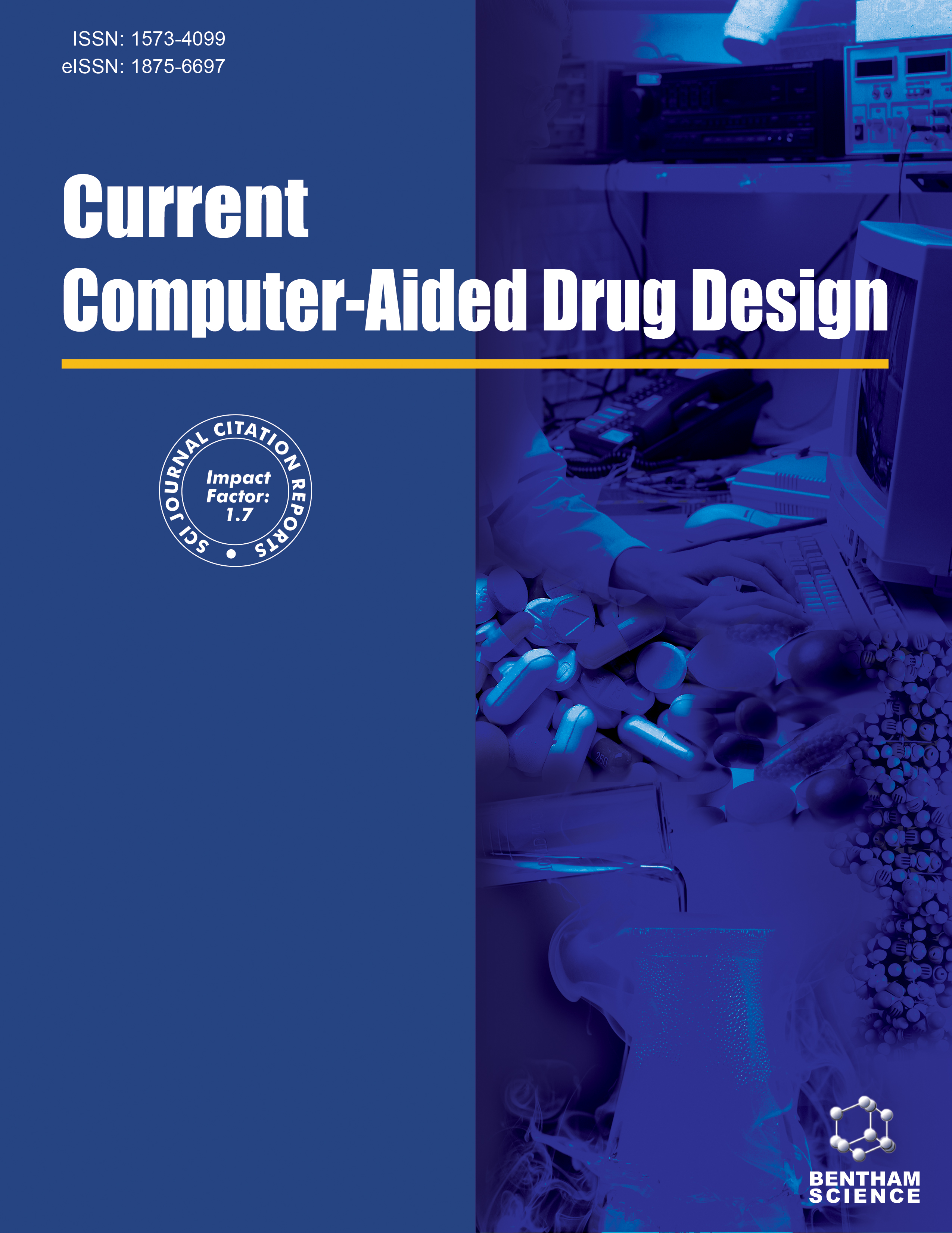- Home
- A-Z Publications
- Current Computer - Aided Drug Design
- Previous Issues
- Volume 12, Issue 2, 2016
Current Computer - Aided Drug Design - Volume 12, Issue 2, 2016
Volume 12, Issue 2, 2016
-
-
Characterizing the Zika Virus Genome – A Bioinformatics Study
More LessAuthors: Ashesh Nandy, Sumanta Dey, Subhash C. Basak, Dorota Bielinska-Waz and Piotr WazBackground: The recent epidemic of Zika virus infections in South and Latin America have raised serious concern on its ramifications for the population in the Americas and spread of the virus worldwide. The Zika virus disease is a relatively new phenomenon for which sufficient and comprehensive data and investigative reports have not been available to date. Objective: To carry out a bioinformatics study of the avail Read More
-
-
-
Clarification of Interaction Mechanism of Mouse Hepatitis Virus (MHV) N and nsp3 Protein with Homology Modeling and Protein-Protein Docking Analysis
More LessAuthors: Gizem Tatar and Tugba Taskin TokThe coronavirus Nucleocapsid (N) plays an important role in the virus structure, the replication, and the transcription of CoV. This protein, which has a helix and flexible structure, and is capable of binding on to the viral genomic RNA, is a non-structural protein (nsp3). Many studies suggest that the N protein interaction with nsp3 plays a critical role in the virus replication early in infection. Therefore, it is necessary to know the de Read More
-
-
-
Molecular Dynamics Simulation Reveal the Mechanism of Resistance of Mutant Actins to Latrunculin A – Insight into Specific Modifications to Design Novel Drugs to Overcome Resistance
More LessAuthors: Roopa Lalitha, Pravin Kumar R. and M. M. Sudheer MohammedBackground: Mutant actins D157E and R183A-D184A are reported to resist the anticancer drug Latrunculin A (LAT); though identified, the mechanism of resistance is not clearly understood. Objective: To design better molecules that can overcome the resistance caused by mutations it is important to define precise pharmacophoric regions in LAT based on the mechanism of resistance on the mutant actin –LAT interactio Read More
-
-
-
Rhodomyrtone Target Exploration: Computer Aided Search on Staphylococcus aureus Key Proteins as a Potential Therapeutic Target
More LessAuthors: Dennapa Saeloh, Varomyalin Tipmanee and Supayang P. VoravuthikunchaiBackground: Methicillin-resistant Staphylococcus aureus (MRSA) has been a global public health problem because MRSA infection often leads to poor clinical outcomes. Currently, the search for an effective candidate has been ongoing. Rhodomyrtone, a natural compound, has been exhibited strong anti-MRSA activity comparable to that of vancomycin, a drug of choice for MRSA treatment. An important procedure to develop t Read More
-
-
-
Discovery of Novel HIV-1 Integrase Inhibitors Using QSAR-Based Virtual Screening of the NCI Open Database
More LessAuthors: Gene M. Ko, Rajni Garg, Barbara A. Bailey and Sunil KumarBackground: Quantitative structure-activity relationship (QSAR) models can be used as a predictive tool for virtual screening of chemical libraries to identify novel drug candidates. The aims of this paper were to report the results of a study performed for descriptor selection, QSAR model development, and virtual screening for identifying novel HIV-1 integrase inhibitor drug candidates. Methods: First, three evolutionary alg Read More
-
-
-
Design of Broad-Spectrum Inhibitors of Influenza A Virus M2 Proton Channels: A Molecular Modeling Approach
More LessBackground: The influenza A virus M2 proton channel plays a critical role in its life cycle. However, known M2 inhibitors have lost their clinical efficacy due to the spread of resistant mutant channels. Thus, the search for broad-spectrum M2 channel inhibitors is of great importance. Objective: The goal of the present work was to develop a general approach supporting the design of ligands interacting with multiple lab Read More
-
-
-
Current Status of Computer-Aided Drug Design for Type 2 Diabetes
More LessAuthors: Shabana Bibi and Katsumi SakataBackground: Diabetes is a metabolic disorder that requires multiple therapeutic approaches. The pancreas loses its functionality to properly produce the insulin hormone in patients with diabetes mellitus. In 2012, more than one million people worldwide died as a result of diabetes, which was the eighth leading cause of death. Objective: Most drugs currently available and approved by the U.S. Food and Drug Administration Read More
-
Volumes & issues
-
Volume 21 (2025)
-
Volume 20 (2024)
-
Volume 19 (2023)
-
Volume 18 (2022)
-
Volume 17 (2021)
-
Volume 16 (2020)
-
Volume 15 (2019)
-
Volume 14 (2018)
-
Volume 13 (2017)
-
Volume 12 (2016)
-
Volume 11 (2015)
-
Volume 10 (2014)
-
Volume 9 (2013)
-
Volume 8 (2012)
-
Volume 7 (2011)
-
Volume 6 (2010)
-
Volume 5 (2009)
-
Volume 4 (2008)
-
Volume 3 (2007)
-
Volume 2 (2006)
-
Volume 1 (2005)
Most Read This Month
Article
content/journals/cad
Journal
10
5
false
en


